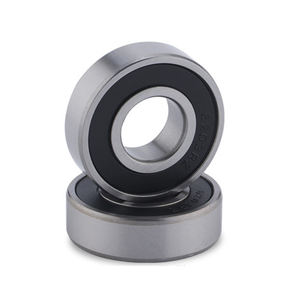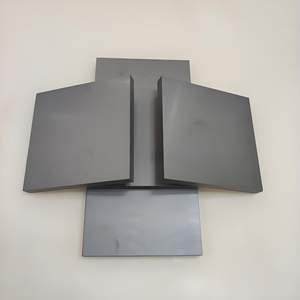Discover Premium Ceramic Products | Durability & Elegance United | Advanced Ceramics
PRODUCT PARAMETERS
Description
Introduction of Boron Carbide Ceramics
Boron carbide ceramics is an inorganic, non-metallic material with carbon and boron as its main components, and its chemical formula is B4C. Since its discovery in the early 20th century, this material has attracted a great deal of attention because of its unique physical and chemical properties. Boron carbide ceramics have an extremely high hardness, second only to diamond and cubic boron nitride, which makes it important in the field of wear-resistant materials. It also exhibits excellent corrosion resistance, high-temperature stability and low-density properties, attributes that make it ideal for the manufacture of bullet-proof vests, nozzles, bearings and other mechanical components that require high wear resistance. Boron carbide ceramics can also be prepared in a variety of shapes and sizes through different processes to meet the needs of different industries.
Characteristics of Boron Carbide Ceramics
Boron carbide ceramics are known for their excellent performance characteristics, starting with their ultra-high hardness and strength, which makes them resistant to severe abrasion and scratching, making them ideal for use in cutting tools and abrasives. Secondly, the material possesses excellent chemical stability and is less likely to react with chemicals such as acids and alkalis, even in extreme environments, making it widely used in certain key components in the chemical industry. In addition, the superior thermal stability of boron carbide ceramics and their ability to maintain structural and property stability at extremely high temperatures makes them one of the key materials in the aerospace and nuclear industries. Finally, it is worth mentioning its lightweight properties, which, due to its low density, make boron carbide ceramics an ideal option for application scenarios that require light weight but high strength. Together, these characteristics give boron carbide ceramics a wide range of applications.
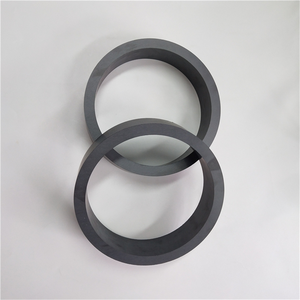
(Boron carbide B4C ceramic beam rod cylinder)
Specification of Boron carbide B4C ceramic beam rod cylinder
Boron carbide (B4C) ceramic beam pole cylinders are high-performance elements designed for extreme atmospheres. The material incorporates low thickness with outstanding solidity, ranking third after diamond and cubic boron nitride. This makes it optimal for applications needing wear resistance, longevity, and light-weight services. The composition consists of boron and carbon atoms set up in a rhombohedral crystal framework, developing a robust matrix resistant to physical and chemical deterioration.
Boron carbide beams master mechanical strength. The compressive stamina exceeds 3000 MPa, while flexural toughness varieties between 400-600 MPa. These properties make sure integrity under heavy loads and high-stress problems. The product’s firmness (up to 36 Grade point average on the Vickers range) minimizes surface area wear, expanding life span in unpleasant setups.
Thermal security is one more vital attribute. Boron carbide keeps structural honesty at temperature levels as much as 1800 ° C in inert environments and 600 ° C in oxidizing settings. This fits it for usage in high-temperature heaters, nuclear reactors, and aerospace systems. Thermal conductivity is modest (30-42 W/m · K), making it possible for efficient heat dissipation without compromising thermal shock resistance.
Chemical inertness enhances adaptability. B4C withstands acids, alkalis, and molten metals, making it suitable for destructive commercial processes. It additionally acts as a neutron absorber in nuclear applications because of its high neutron capture cross-section.
Production involves sophisticated sintering techniques like hot pressing or stimulate plasma sintering (SPS). These methods accomplish near-theoretical thickness (over 98%), removing porosity and enhancing mechanical efficiency. Precision machining ensures tight dimensional resistances for parts like light beam poles and cyndrical tubes.
Common applications include shield systems, cutting devices, sandblasting nozzles, and use plates. In shield, B4C ceramic light beams supply ballistic protection while lowering weight. Industrial devices gain from prolonged life expectancy in unpleasant machining jobs. Nuclear reactors use B4C components for control rods and shielding because of radiation resistance.
Customization options cover dimension, geometry, and surface coating. Examining methods consist of firmness dimensions, thickness checks, and microstructural analysis to make sure top quality. Boron carbide ceramic beam of light pole cyndrical tubes satisfy requiring performance criteria throughout defense, power, and producing sectors.
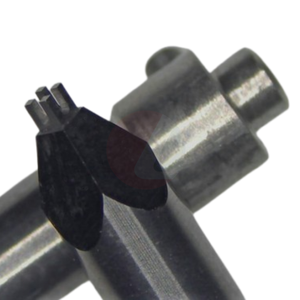
(Boron carbide B4C ceramic beam rod cylinder)
Applications of Boron carbide B4C ceramic beam rod cylinder
Boron carbide (B4C) ceramic beam of light pole cylinders are made use of in many sectors. The material has high firmness. It is lightweight. It withstands wear. It stays secure under heat. These features make it beneficial for laborious.
One significant use is shield systems. B4C ceramic beam pole cylinders are in army cars and body armor. The product stops bullets and shrapnel. It is lighter than steel. This helps in reducing weight while keeping protection.
Another area is commercial machinery. B4C beam of light pole cylinders take care of unpleasant environments. They are used in sandblasting nozzles. They last much longer than metal parts. They reduced replacement costs.
The nuclear market depends on B4C. The product takes in neutrons. This makes it optimal for control rods in activators. It assists manage nuclear reactions securely. It is also made use of in radiation securing.
B4C ceramic light beam rod cylinders operate in high-temperature setups. They keep their strength even over 2000 ° C. This makes them great for aerospace parts. They endure extreme warm throughout re-entry or engine procedure.
Cutting devices utilize B4C. The ceramic’s hardness allows accurate cutting of steels and composites. It stays sharp longer than standard devices. This boosts efficiency in manufacturing.
The product remains in wear-resistant components. B4C beam of light rod cylinders are used in pumps and shutoffs. They withstand deterioration from chemicals. They extend devices life in severe problems.
B4C is expensive contrasted to various other ceramics. Its advantages typically validate the rate. It minimizes downtime. It lowers upkeep. It boosts safety in critical applications.
Research study remains to expand B4C uses. New methods intend to make it less costly. Efforts concentrate on better production strategies. This can cause bigger fostering in markets like power and transport.
Company Introduction
Advanced Ceramics founded on October 17, 2014, is a high-tech enterprise committed to the research and development, production, processing, sales and technical services of ceramic relative materials and products.. Since its establishment in 2014, the company has been committed to providing customers with the best products and services, and has become a leader in the industry through continuous technological innovation and strict quality management.
Our products includes but not limited to Silicon carbide ceramic products, Boron Carbide Ceramic Products, Boron Nitride Ceramic Products, Silicon Carbide Ceramic Products, Silicon Nitride Ceramic Products, Zirconium Dioxide Ceramic Products, Quartz Products, etc. Please feel free to contact us.(nanotrun@yahoo.com)

Payment Methods
T/T, Western Union, Paypal, Credit Card etc.
Shipment Methods
By air, by sea, by express, as customers request.

5 FAQs of Boron carbide B4C ceramic beam rod cylinder
What is B4C ceramic?
Boron carbide (B4C) ceramic is a synthetic material. It is one of the hardest materials, second only to diamond and cubic boron nitride. It combines high hardness, low density, and strong resistance to wear and corrosion. It is used in extreme environments like armor plating, abrasive nozzles, and nuclear reactors.
Why choose B4C ceramic for beam rod cylinders?
B4C ceramic offers exceptional durability. It withstands high temperatures, heavy loads, and abrasive conditions better than metals or polymers. Its lightweight nature reduces stress on moving parts. This improves efficiency and lifespan in machinery requiring precision and reliability.
Where is B4C ceramic beam rod cylinder used?
These components are common in aerospace, defense, and industrial equipment. Examples include piston rods in high-pressure pumps, cutting tools for machining, and protective shields in armored vehicles. They perform well in harsh settings like chemical plants or high-speed manufacturing.
Does B4C ceramic break easily?
B4C ceramic is brittle compared to metals. It can crack under sudden impact or uneven stress. Proper design and installation minimize this risk. Avoid direct collisions or sharp force. Its brittleness is offset by its unmatched wear resistance in steady, high-stress applications.
How to maintain B4C ceramic components?
Regular inspection for surface cracks or chips is critical. Clean parts with non-abrasive solvents to avoid particle buildup. Ensure proper alignment during use to prevent uneven pressure. Follow manufacturer guidelines for load limits and temperature ranges. Storage in dry conditions prevents moisture-related degradation.
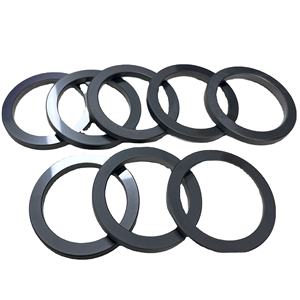
(Boron carbide B4C ceramic beam rod cylinder)
REQUEST A QUOTE
RELATED PRODUCTS
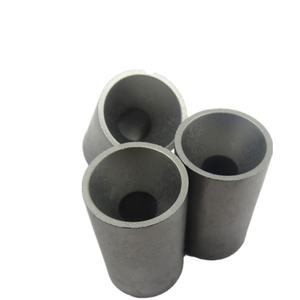
Silicon Carbide Ceramic Boron Carbide Ceramic Plate B4C Ceramic Tiles Single-curved Surface
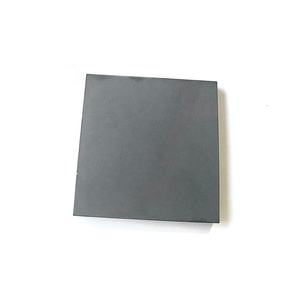
Customized Boron Carbide Ceramic B4C Circle with Double Holes
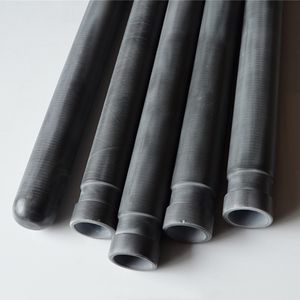
F400 F600 F800 Boron Carbide Powder for Ceramic Einforcement

High Temperature Resistance Boron Carbide Nozzle B4C Ceramic Tube Sleeve
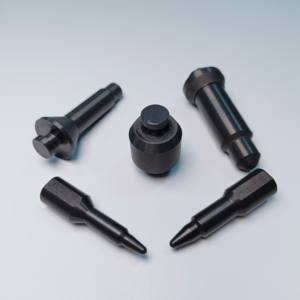
Grinding Polishing Material Boron Carbide B4C Black Heat-resisting Boron Carbide for Ceramic Tile
